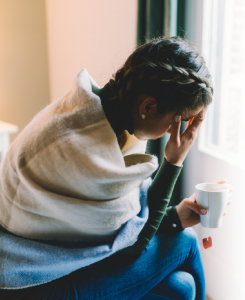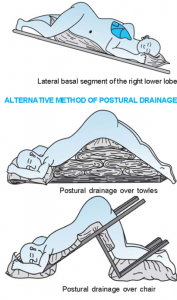Written By: Julie B. Barnett, PT, DPT, MTC
Postural Tachycardia Syndrome (POTS) is a form of orthostatic dysautonomia and is a complication after Covid-19. Vitals are measured in 10 minute increments in supine and standing to monitor POTS.
Criteria for POTS include:
- HR Increase of at least 30 bpm from supine to standing for adults

- HR Increase of at least 40 bpm from supine to standing for pediatric patients
- Blood pressure may be stable or fluctuating
Prevention interventions could include:
- Adequate hydration/electrolytes
- Compression stockings
- Increased dietary or supplemental salt
- Slow and careful transfers to upright positioning
- An exercise program that begins with supine or reclining activity and gradually progresses to more upright conditioning
- Multiple muscle group Isometrics 3 sec with normal breathing
- Resisted breathing exercise/use of a straw
Other interventions for orthostatic symptoms:
- Crossing of legs with isometric pillow squeeze or knee squeezes 3 sec
- Heel raises or ankle pumps 30-50 reps
- Sitting: timed
- Deep squatting: hold onto chair/counter for safety
- Slow deep breathing to engage respiratory muscles; 3 times. Do not hyperventilate
Breathing interventions:
- Inhaling
- Breathing in through a straw
- Incentive spirometer
- Exhaling
- Blow up a balloon
- Blow a plastic pinwheel
- Blow through a straw to blow a cotton ball across table
- Pursed lip blowing a Kleenex in front of them
- Blow as if to fog up a mirror
- Hands on lower ribs and feel ribs expand
- Place Kleenex box on stomach and watch it rise and fall with breathing
Therapists should assess for fall risk and ensure safe environments around the individual. Supported exercises in supine initially for safety. Low level cardiovascular exercises with pulleys, seated pedals, and slow walking with support. Pulse oximeters, wearable technology and smart watches can be used to assist in monitoring and progress.
Review of how to use
- How to use Incentive Spirometers
-
-
-
-
-
- Pulmonary exercises after COVID could include these instructions:
- Incentive Spirometer for 15 minutes
- 3 sessions; 5 minutes each
-
-
-
-
-
- How to use Pulse Oximeters
- How to use Postural Drainage if a bacterial pneumonia developed
- Key points
- Simple and great benefits
- Highest portion of lungs receives most air
- Lowest portion of lungs receives most blood
- Gravity helps dislodge mucus and triggers healthy cough
- Tips
- 4 postures: R and L side lying, bridging and down-ward dog
- 2 deep breathes in each posture
- Pillows or props can be used
Explore online continuing education courses from Julie below:


